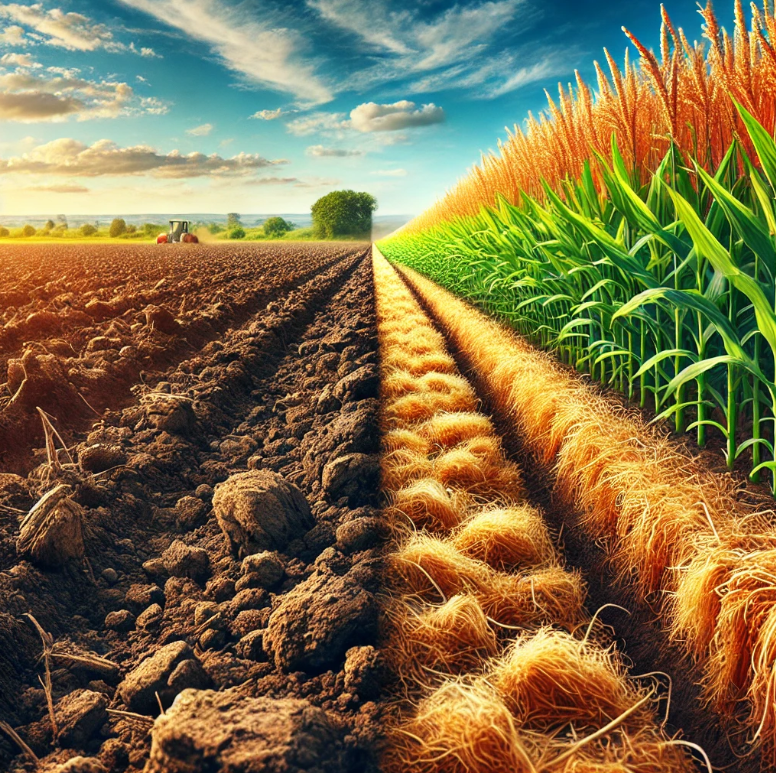As stewards of farmland, every decision you make affects both your short-term yields and the long-term sustainability of your soil. One of the biggest choices farmers face today is whether to use till or no-till farming practices. Each approach offers unique benefits, and understanding their differences helps you make informed decisions that align with your goals for soil health, productivity, and profitability.
What Is Tillage?
Tillage is the traditional method of preparing the soil for planting by mechanically turning it over. It can involve deep plowing or shallow cultivation. For centuries, farmers have relied on tillage to break up compacted ground, manage weeds, and create an ideal seedbed for planting.
What Is No-Till Farming?
No-till farming skips mechanical soil disturbance entirely. Instead, seeds are planted directly into the residue from previous crops. This practice keeps the soil structure intact, reduces erosion, and enhances microbial activity — all of which improve long-term soil health.
Benefits of Tillage
- Weed Control: Tilling buries weeds and reduces competition for nutrients and water. It can also limit the need for herbicides, especially in heavily infested fields.
- Soil Aeration: Turning over the soil improves airflow and water infiltration. This can lead to better root growth and overall crop health.
- Residue Management: In fields with high crop residue, tilling accelerates decomposition and improves seed-to-soil contact — encouraging even germination.
- Faster Spring Warm-Up: Tilled soil warms faster in early spring, a key advantage in cooler climates where planting windows are short.
Benefits of No-Till Farming
- Reduced Erosion: No-till farming helps protect the soil from wind and water erosion by keeping crop residue on the surface — especially important in sloped or flood-prone areas.
- Improved Soil Health: Without soil disturbance, beneficial organisms like earthworms, fungi, and bacteria thrive. This enhances soil structure and boosts natural nutrient cycling. Learn more from the NRCS Soil Health Guide.
- Better Moisture Retention: Residue acts as a natural mulch, helping the soil retain water and reducing evaporation during dry periods.
- Lower Costs: No-till farming saves fuel, labor, and equipment wear. With fewer field passes, you reduce operating expenses while conserving resources. Explore details in Purdue University’s No-Till Guide.
Choosing the Right Approach
Your decision should depend on soil type, crop rotation, drainage, and long-term management goals. Tillage often benefits short-term yield goals by improving seedbed conditions. Meanwhile, no-till supports long-term sustainability and soil conservation.
A hybrid or conservation-tillage system offers a middle ground. This approach disturbs only part of the soil (such as with strip-till), balancing productivity with protection. Many Iowa farmers are finding this strategy effective for maximizing yield while improving soil structure.
Conclusion
There’s no universal answer when comparing till and no-till farming — both have proven benefits. The right method depends on your farm’s goals, location, and soil health priorities. Whether you’re optimizing for yield, sustainability, or efficiency, understanding your land is the key to success.
Interested in learning more about no-till practices? Visit No-Till Farmer for real-world case studies and expert insights from across the Midwest.
Have questions about your land strategy? Contact David Whitaker at Whitaker Marketing Group for tailored farmland advice.

A side-by-side view of tilled and no-till farmland in Iowa, illustrating how different soil management practices affect soil structure and sustainability.